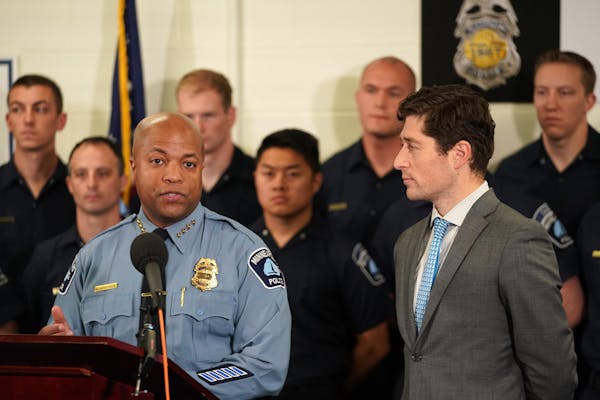The number of delayed police responses cited by Minneapolis police officials to underscore staffing shortages was less than a fifth of the actual tally.
The revised count comes after officials determined that they had overlooked thousands of cases in which people called 911 to report a shooting or domestic assault and no police units were available to respond, said Minneapolis city coordinator Nuria Rivera-Vandermyde.
"It's not that the data was wrong, it's that the data was limited," she said in an interview this week. "I'm a firm believer that data is data, and we need to be as transparent as we can."
The confusion started last week when Police Chief Medaria Arradondo told the City Council committee that oversees public safety that over a 12-month period dating back to last summer there were 1,251 instances in which no squads were immediately available to respond to Priority 1 calls. It turns out the actual number more than five times larger, officials now say: 6,776.
Because of the way the way that some of the calls were coded, many were missed when the department first queried the city's 911 records, said Rivera-Vandermyde, an oversight that didn't become apparent until a subsequent data pull retrieved thousands of additional calls.
The newly released department data show that the number of delayed-response calls decreased about 5%, from 7,188 over the previous 12 months. Other calls where police responses took longer than expected also numbered in the thousands, the data show.
What the data don't detail is how long each call was pending before police arrived or whether other squad cars were tied up by another serious emergency in a different part of town.
Dispatchers determine whether a call is a high priority, depending on the alleged crime's severity — ranging from a Priority 0, for cases where there exists an imminent danger to life, to a Priority 4 — which will determine how quickly police will respond. Calls are put into a queue awaiting an available officer; but if none are free to respond within an allotted time, dispatchers are required to notify a supervisor. For Priority 1 emergencies, police are supposed to start toward the scene within 70 seconds of the initial 911 call.
Council Member Steve Fletcher said the new numbers, while alarming, don't necessarily change his mind on the need to think long-term.
"It does concern me that the chief's numbers were as far off as they were," said Fletcher, who sit on the public safety committee. "Whichever number it is, without more context of how long were they pending or how many duplicate calls there were … it's hard for me to form an opinion about whether those numbers should lead to policy change."
Arradondo's request for adding 400 more beat cops by the year 2025 stirred heated debate inside and outside of City Hall.
Several calls this week to Council President Lisa Bender, who has been outspoken about her opposition of the chief's plan, went unanswered. But on Twitter, she questioned why the chief's recent comments struck a tone starkly at odds with an earlier presentation, in which he pointed out that crime was down.
In the meantime, a city work group has been convened to study which type of emergencies require a police response and which could potentially be diverted to other agencies. Tony Williams, a local organizer, said that too often policy decisions are driven by public safety threats — some real, some imagined — while pointing out that research on how increasing the number of officers affects crime rates remains mixed at best.
"When we talk about police, a lot of the time we're talking about this sort of one-size-fits-all solution when we expect cops to number one deal with all these sorts of social service interventions when we don't have other resources for," said Williams, who has long advocated for funding alternative crime-fighting measures. Nichole Buehler, executive director of Harrison Neighborhood Association, said she sees both sides of the debate, saying that she once waited hours for a police response after she and her husband returned from an out-of-town trip to find strangers squatting in their home. But, she also wondered whether police are best suited to respond to less dangerous situations like, for instance, a drug overdose.
"That's obviously disturbing if people are in danger or in need of emergency assistance and there's no one to response, but I think the question is: Why are there not enough officers to respond? And what types of calls are they being asked to respond to?" she said.
But Brian Peters, executive director of the Minnesota Police and Peace Officers Association, said the problem underscores the need for a greater investment in police forces.
"Those types of incidents do require a more lengthy type of investigation," he said. "It requires more resources."
Oakdale issues warning after coyote attacks dog in nature preserve
Anoka County extends search for county administrator

Minneapolis public schools and teachers reach tentative contract agreement to avert potential strike

